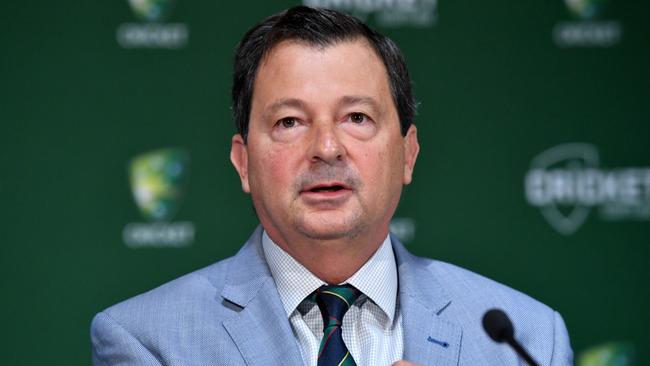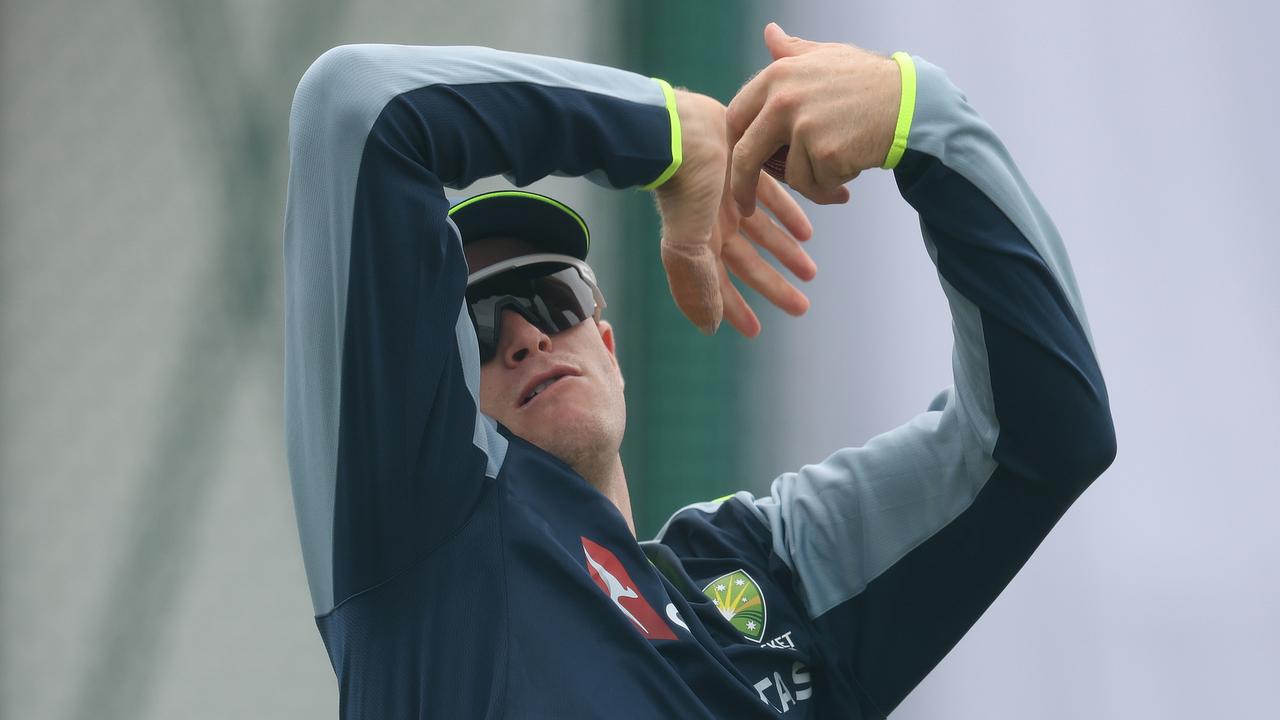Cricket Australia ball-tampering review scathing of leadership, emphasis on winning, arrogant approach
The report, ordered after the ball-tampering scandal, condemns “dictatorial” administrators and a winning-obsessed culture.
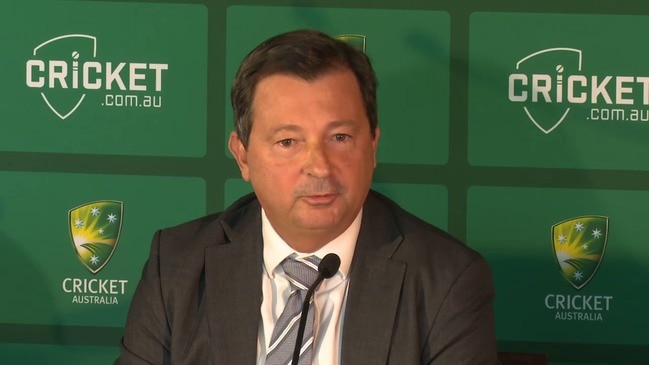
Simon Longstaff has delivered a scathing review of Australia’s cricket culture, sheeting a large share of responsibility for the scandal in South Africa and the way cricket is played home to the administrators of the sport.
The 145-page report draws comparisons to the Banking Royal Commission and appears to suggest administrators need to resign for the game’s greater good.
“That a financial institution ‘robbed the dead’ is as unthinkable as an Australian cricket player taking sandpaper onto the field — and has prompted a similar response from the Australian public,” the review notes.
“The leadership of CA should also accept responsibility for its inadvertent (but foreseeable) failure to create and support a culture in which the will-to-win was balanced by an equal commitment to moral courage and ethical restraint.
“While good intentions might reduce culpability — they do not lessen responsibility ... especially not for those who voluntarily take on the mantle of leadership.”
The report, prepared by Ethics Centre head Simon Longstaff and his staff, does not call for a reduction of the bans on Steve Smith, David Warner or Cameron Bancroft.
• Cricket review — key findings
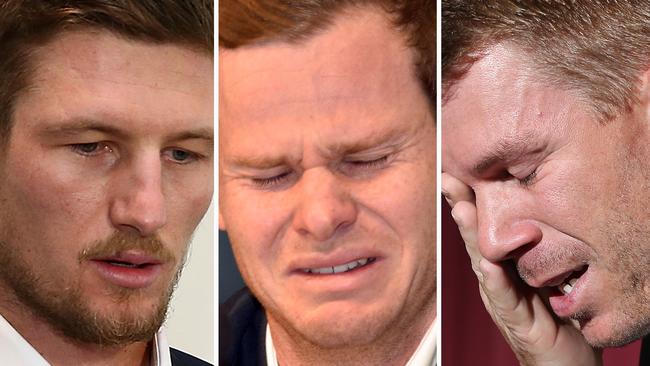
It all but calls for the heads for the game to fall on their swords and be accountable, just as they held the players to account in the wake of the cheating.
“The ball-tampering incident at the Newlands Ground in South Africa can be seen as an aberration. It can be dismissed as the failure of a handful of players,” the report says ahead of a redacted section, then continues: “However, to think this would be mistaken ... we have seen evidence that the structures built around elite cricket are oriented to winning, without properly counting the costs ... winning is pursued as a perfectly legitimate objective without counting the cost.
“What is needed is principled leadership and the acceptance of responsibility.
“It is the unfortunate lot of a leader that he or she may sometimes be called upon to sacrifice themselves for the greater good. Principled leadership of this kind is rare in contemporary society. Cricket has a chance to set a better example — and in doing so, to remediate much of the harm caused by the incident at Newlands. Whether it takes up this option is a matter for the individuals concerned to determine.”

The executive summary notes that “CA is perceived to say one thing and do another”.
“The most common description of CA is as “arrogant” and “controlling”.
One of the key findings is a review of the Pat Howard’s high-performance unit and an end to the player performance bonuses.
Recently re-elected chairman David Peever admitted the organisation had got things wrong and apologised, but indicated some dissatisfaction with the findings.
“It has been a difficult and confronting time for everyone involved in Australian Cricket, and for that I am sorry,” he said. “Mistakes have been made, lessons have been learnt, and changes are and will continue to take place ... having considered the recommendations, CA is committing to enacting and exploring further the recommendations and actioning where appropriate”.
Longstaff reveals an organisation where values are in short supply.
“One of the most significant findings of this review is that the perceived causes of the ball-tampering incident at Newlands significantly overlap with the perceived current state of cricket in Australia,” he found.
“That is, the evidence suggests that Newlands was not an aberration — a cultural ‘outlier’. Rather, it is an extreme example of a latent tendency growing out of the prevailing culture of men’s cricket in Australia — especially (but not exclusively) at the elite levels. As it happens, this fits with the opinions of keen observers of Australian cricket who report, with considerable regret ... that the events in Newland were ‘disappointing but not surprising’.”
Respondents to the review reveal an organisation where players were part of a machine that was “fine tuned for the sole purpose of winning” by bosses who knew the price but not the value of the game.
Longstaff says, as reported in The Australian this morning, that there is a culture of bullying in head office, just as there was on the field.
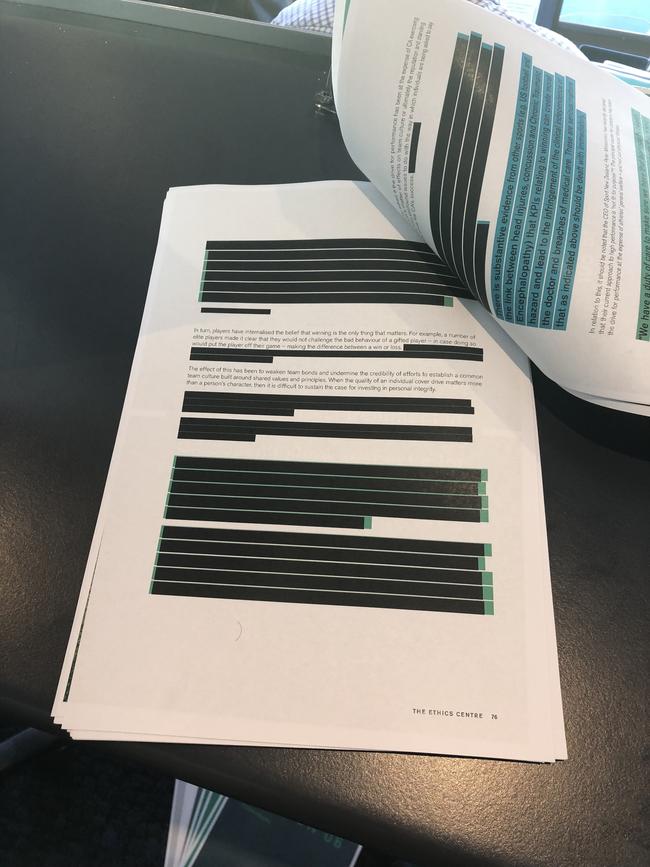
“The incidence of verbal abuse extends beyond player behaviour. It is also said to be evident in other stakeholder relationships and extends to turning a blind eye to behaviour that would normally be described as bullying ... respondents say the focus on outcomes does not extend to a critical examination of the means by which the outcomes are achieved,” the report said.
The report, which says administrators are not held accountable the way players are, speaks of a “gilded bubble” for players, coaches and support staff.
“They (within the bubble) are blinded by their noble intentions,” it says. “They are desensitised by the logic of their arguments and the science that inform their practices. They believe they are clear-eyed realists and others are deluded ...”
The findings attacks the high performance units attitude to Sheffield Shield with practices it says “speaks of gross disrespect”.
Respondents to the review questioned Cricket Australia’s commitment to gender equity and noted that funding for the digital team’s coverage of international games had been completely removed.
“Multiple instance of disrespect running through CA are cited,” the report notes ... people expressed dissatisfaction with CA’s decision-making processes and style. Relationships between CA and stakeholders are frequently described as ‘dictatorial’ and ‘not collaborative’.
In a section which addresses the “early warning signs” ahead of Cape Town, the report again found the behaviours could be traced back to head office in its business dealings.
Respondents identified an immaturity among elite male players, a lack of consequence for disciplinary breaches, a fear of speaking up, a win at all cost mentality and aggressive tactics, noting “similar comments have been made about negotiations — including between CA and its sponsors and broadcast partners”.
Longstaff disputes the notion that there is a “win at all costs” mentality, labelling the attitude a “winning without counting the costs”.
Much has been redacted but a quote from a current player was included in the report:
“If you can get away with it, you do it ... winning is everything. Suddenly we have a culture problem — we didn’t have one when we were winning!”.
Longstaff makes over 40 recommendations including establishing an ethics commission, putting an end to player performance bonuses and encouraging players to re-engage with the Sheffield Shield, valuing it above international T20 cricket.
He calls on the board to end its culture of secrecy and publish minutes of its meetings.
More Coverage
